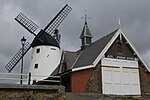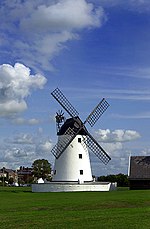Lytham Festival

The Lytham Festival (formerly and colloquially Lytham Proms) is an annual five-day music festival held in Lytham St Annes, Lancashire. The festival takes place adjacent to Lytham Windmill on Lytham Green, a strip of grass between the town's coastal road and the River Ribble estuary. In promotion and ticketing, festival organisers refer to the venue as "The Proms Arena". It is usually held in mid-July, with the final night often featuring an evening of orchestral classical music, in the style of a traditional promenade concert. Lytham Festival first took place in 2009, and is operated by Lancashire-based promoter Cuffe & Taylor, owned by Live Nation UK. The festival typically has a capacity of 20,000.
Excerpt from the Wikipedia article Lytham Festival (License: CC BY-SA 3.0, Authors, Images).Lytham Festival
Central Beach, Borough of Fylde
Geographical coordinates (GPS) Address Nearby Places Show on map
Geographical coordinates (GPS)
| Latitude | Longitude |
|---|---|
| N 53.735357 ° | E -2.957525 ° |
Address
Central Beach
Central Beach
FY8 5LB Borough of Fylde
England, United Kingdom
Open on Google Maps








